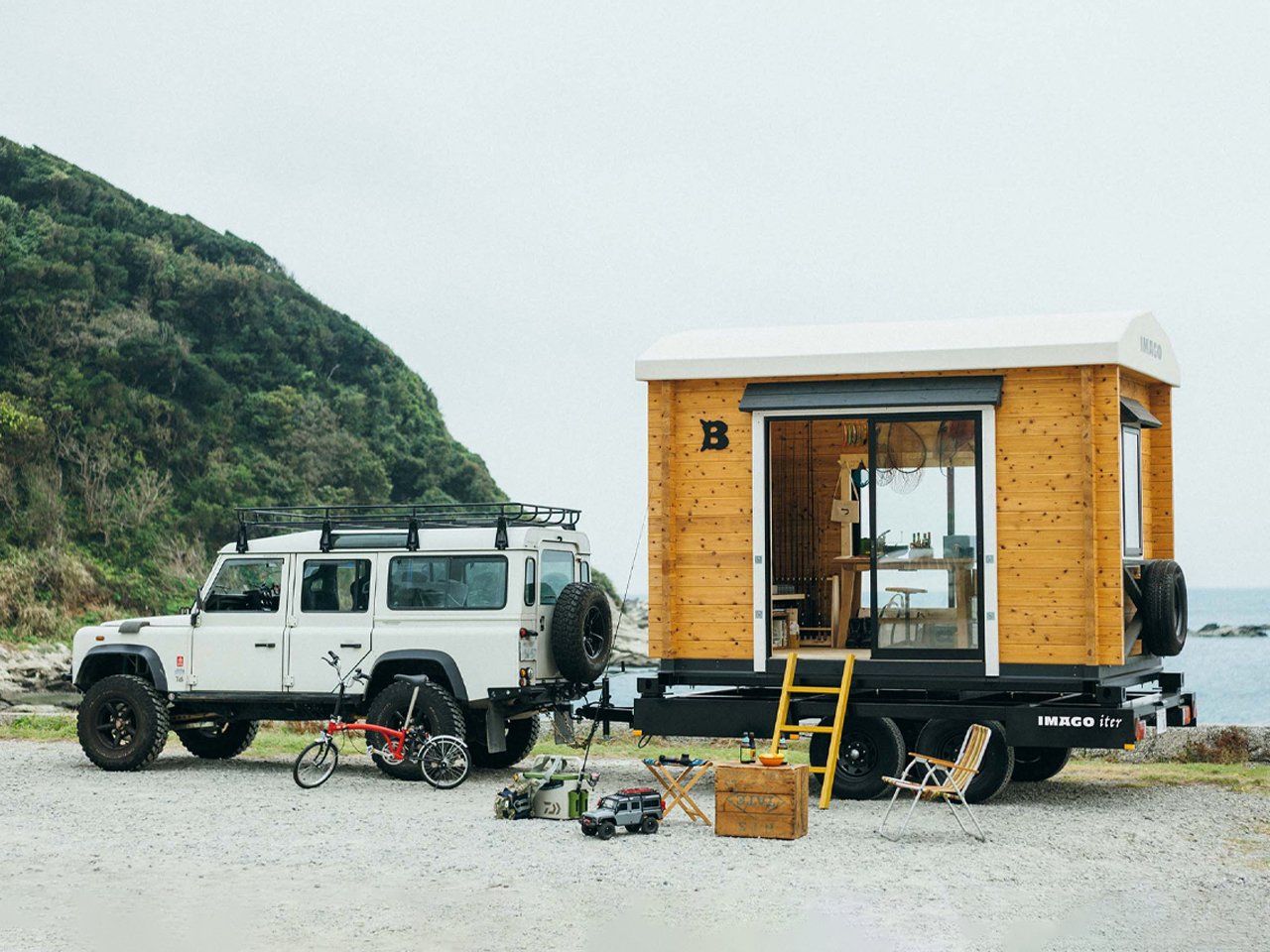Living on wheels or in an RV offers a lifestyle that gives one the freedom to travel anywhere while working and chasing your travel goals. With remote work becoming popular, life in a tiny home on wheels might not be as ideal as it seems. While the mobility and flexibility of relocating frequently and the cost-effective nature of downsizing can be appealing, there are also challenges to be aware of. According to the RV Industry Association, approximately one million Americans live full-time in recreational vehicles.
Tiny home RVs provide remarkable flexibility, allowing you to connect with nature while choosing from a variety of sizes, from compact van-style homes to spacious bus-sized structures. However, it’s essential to consider the challenges and determine whether this way of living truly aligns with your personal needs before leaping.
1. Constrained Space
Living in a tiny home on wheels may be appealing to some, but the minimalist lifestyle might not suit everyone, especially those not ready to downsize their possessions. It can be particularly challenging for those who feel claustrophobic or those who value privacy, as the small space and lack of separation can make it difficult to maintain a sense of personal space.
Additionally, the stability of a tiny home on wheels doesn’t compare to a traditional home on land. These homes require regular maintenance and upkeep to keep the space clutter-free. Finally, with constant mobility, ensuring the structure remains stable while on the move is also a critical concern.
With limited square footage, the Dufour 780 is a luxurious and eco-friendly wooden tiny home designed by Berghaus, a German studio known for its sustainable architecture. The house on wheels spans 26 feet in length and this mobile cabin seamlessly blends rustic charm with modern comforts. The design features two loft bedrooms, each with its staircase. Additionally, the House on Wheels includes high-end amenities, such as an infrared heated floor, air-conditioning, and solar panels for off-grid living.
The Dufour 780 is thoughtfully designed with sustainability in mind, maximizing functionality within its constrained space. Its wooden façade and large circular window enhance natural light and ventilation, while solar panels and water tanks ensure self-sufficiency. Inside, the compact yet efficient layout includes a cozy living area with a fireplace, a well-equipped kitchen with modern appliances, and an eco-friendly bathroom. Despite the limited space, the two loft bedrooms offer double beds, ample storage, and skylights, balancing comfort and practicality for off-grid living.
2. Limited Storage
In a tiny home, space is limited, so furniture must be carefully designed to make the most of every inch of available space. For instance, a bed with built-in drawers and vertical walls used for cabinetry or shelving can help maximize storage within the tiny house on wheels. Efficient use of space is essential, and thoughtful placement of items ensures that everything is easily accessible while keeping the area organized.
Living in such close quarters, especially when sharing with others, can also pose challenges when it comes to designating personal areas or creating functional spaces for specific needs, such as a workstation or bedroom.
The 1914 Ford Model T Motor Caravan is one of the world’s oldest known motorhomes, built on the chassis of a Ford Model T and commissioned by the Bentall family, founders of a luxury department store. Created before World War I, the caravan was restored in the 1970s to its original specifications after being abandoned for nearly 50 years. This unique motorhome stands as a remarkable piece of automotive and design history.
With a wooden interior designed by Dunton of Reading, the tiny home on wheels offers a homely feel, complete with four berths, limited storage, a wood-burning stove, and a leather bench for the driver and passengers. Despite its spacious living area, one of the biggest drawbacks of the motorhome is the lack of a bathroom and running water. The restoration earned the caravan multiple awards, including recognition for its original condition, showcasing its remarkable preservation and historical value.
3. Lack of Utilities
Accessing utilities like water, sewage, and electricity can be challenging in a house on wheels. Unlike traditional homes, tiny homes on wheels don’t offer the same level of personal comfort and convenience. Waste disposal can also be a challenge, and energy needs may require off-grid solutions like solar panels.
Additionally, the compact design means kitchens and bathrooms are smaller than those in traditional homes, and the structure is more vulnerable to harsh weather conditions. Reliable internet and connectivity can also be a challenge, especially in remote areas where Wi-Fi and cellular signals may be inconsistent.
The Nomad is a compact, off-grid mobile camper designed for extreme weather conditions, offering self-sufficient living. Built by Quebec-based Minimaliste, it features a solar system, composting toilet, and multiple water tanks, making it ideal for those seeking sustainable and mobile living. The camper includes two 36-gallon tanks for black and gray water, a 54-gallon freshwater tank, and solar panels that provide a minimum of 5.12 kWh of solar power, with an optional advanced package for more capacity.
At 165 square feet, the Nomad maximizes space with a one-bedroom layout that includes a kitchen, bathroom, dining area, and living space. The interiors include walnut laminate finishes, optic white walls, and black-coated accents. High-quality appliances, including a propane boiler, Furrion refrigerator, and stove, are integrated into the kitchen. The bedroom offers ample storage, and the bathroom is equipped with a composting or optional flush toilet, a tub shower, and a 12V fan for ventilation.
4. Mobile Living
Finding a legal place to park your tiny home on wheels can be a challenge, as it must comply with local rules and regulations. When designing the space, you’ll need to carefully consider the material of your furniture and the amount of storage, as everything must be suitable for towing and relocating to different locations. A 20 to 26-foot trailer is ideal for frequent moves, and depending on the weight, you’ll need a truck capable of towing the home.
Frequent travel can also lead to physical fatigue, and while RV parks offer temporary parking, they often limit the number of days you can stay, making it difficult to find long-term, legal parking options.
IMAGO-iter is a versatile wooden mobile home that is designed for a wide range of uses range from camping on holiday trips to working remotely. Created by BESS, a Japanese firm known for its expertise in wooden homes, the mobile home offers a compact 6.5m² interior with 2.4 meters of headspace. Available in fully customizable options, IMAGO-iter allows owners to select from a traditional timber or a domed plastic membrane roof for the mobile home. The exterior features unfinished 70mm thick cedar wood that provides the flexibility to paint the tiny house on wheels in any color.
The design includes large glass windows on all sides to connect the interior with the outdoors which enhances the sense of freedom and nature. IMAGO-iter is equipped with suspension and electromagnetic brakes for safe and stable driving. BESS also conducted a driving test through Japan’s Automobile Research Institute, confirming the mobile home’s stability on the road.
5. Weather and Environmental Challenges
For people who live in a house on wheels, weather and environmental issues are major concerns. Mobile homes have thinner walls than conventional homes, which means they are less insulated from extreme cold or heat. While hot summers can make living conditions intolerable, freezing temperatures can cause pipes to burst. Severe storms and strong winds have the potential to cause instability and damage to buildings and structures. Humidity, rain, and snow can also cause leaks and the growth of mold.
Therefore, for year-round comfort and safety, it is essential to invest in high-quality insulation, weatherproofing materials, effective heating and cooling systems, and storm preparedness measures to overcome these obstacles.
Deciding to embrace tiny living and downsize is a big decision. Before choosing the best tiny house option for your needs, it’s important to do extensive research and take all relevant factors into account. Despite all of the benefits, make sure to carefully consider the drawbacks of living in a house on wheels.
The post The Hidden Downsides of Tiny Home Living: 5 Challenges You Need to Know first appeared on Yanko Design.

